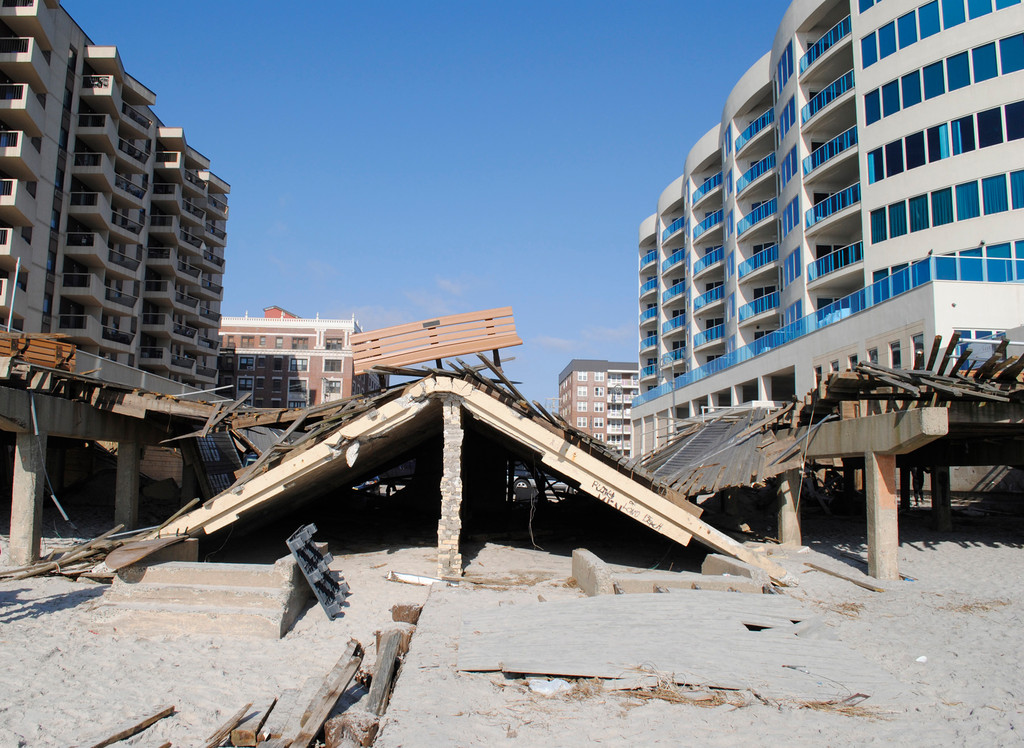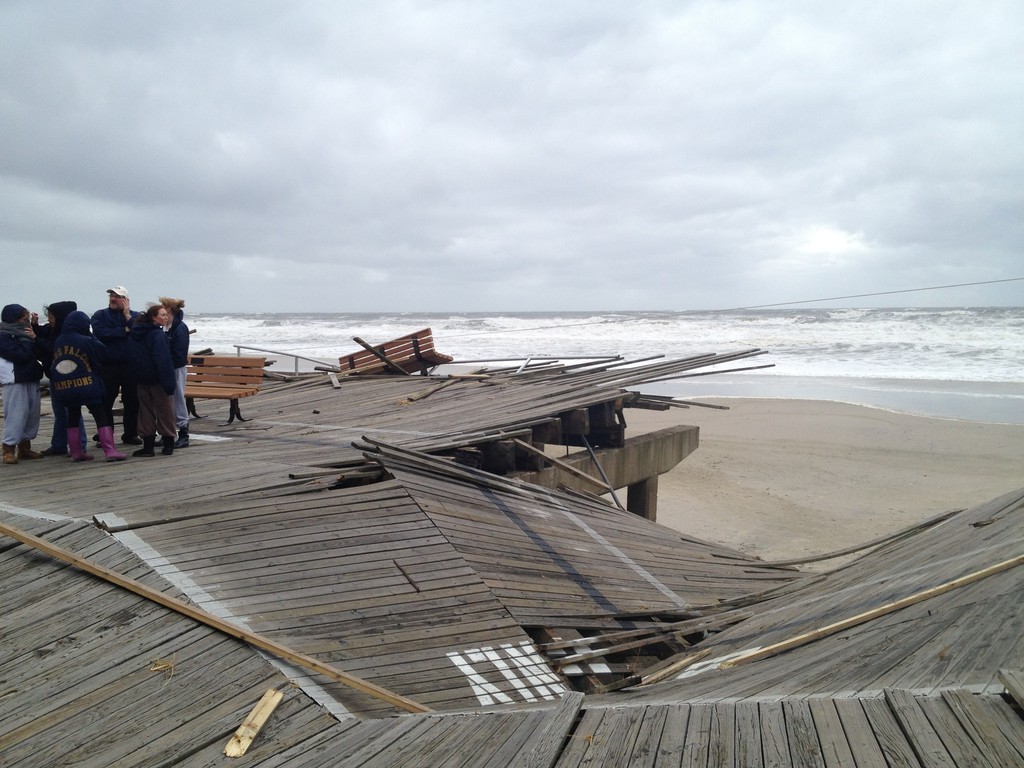City to demolish Long Beach's damaged boardwalk
City 'hopes' to have iconic structure rebuilt in time for summer season; RFPs issued to rebuild
Construction crews have begun removing Long Beach’s iconic boardwalk this month, after the 2.2-mile structure was badly damaged during Hurricane Sandy.
The city will mark the beginning of the demolition process with a ceremony at 11 a.m. on Saturday at Grand Boulevard, two days after crews will began removing sections of the boardwalk, a project that officials said will take about a month.
“This is a major milestone in our reconstruction,” City Manager Jack Schnirman said. “The City Council gave me a very clear direction … that the city’s boardwalk is a top priority.”
At its Dec. 18 meeting, the council voted unanimously to hire Farmingdale-based Thomas Novelli Contracting Inc., the lowest of three bidders that was awarded a $1.4 million contract for the job of tearing down the entire boardwalk — originally built in the early 1900s — and disposing of the wood and other materials.
“Other than the pilings, the only things that will be left are the concrete stanchions,” said Department of Public Works Commissioner Jim LaCarrubba. “We’re hoping to see the work commence by the beginning of the year.”
LaCarrubba said that demolition would include the removal of all wood components, railings, lighting, and ramps. Hundreds of memorial benches that line the boardwalk, however, will be removed and housed by the city, and will be reset after the structure is rebuilt.
City officials said that rebuilding the entire boardwalk is expected to cost approximately $25 million, and the city is seeking public assistance grant monies from the Federal Emergency Management Agency to help pay for those costs. City officials are also calling on FEMA to cover the $250 million in damages caused by the storm.
“We’re still calling for a 100 percent reimbursement,” city spokesman Gordon Tepper said.
At a press conference at the city’s Ice Arena last Friday, FEMA Federal Coordinating Officer Mike Byrne said that the agency has not yet determined how much funding the city will receive to rebuild the structure.
Schnirman said that it was too early to say when reconstruction would begin or how long it would take. As efforts to rebuild “stronger, smarter and safer” have become the city’s primary focus, it also has yet to be determined how the boardwalk will be rebuilt and with what materials.
“We will have the boardwalk [rebuilt] as soon as possible," Tepper said. "Do we hope to have it by the summer? Yes, we do. But there is a bidding process; specifications have to be written up and right now we’re focusing on the demolition of the old boardwalk."
The city issued a request for proposals earlier this month, seeking design specifications to rebuild the structure.
“The first step is to find out how much funding FEMA will give us for mitigation, which means to build [the boardwalk] back stronger,” Schnirman said. “The second step is to get proposals for the best way to build it back stronger, and we’ve put out a request for proposals for design specifications. We have to get recommendations as to how the best way to rebuild will be.”
City takes to steps to protect the beachfront
Schnirman also said that temporary sand barriers constructed on the beach after Hurricane Sandy protected the city by preventing significant flooding during a nor’easter on Dec. 26, which delivered heavy winds and strong rain.
Though the city has reached out to the Army Corps of Engineers to discuss ways to protect both the beachfront and the bay — a project that Schnirman said could take several years to complete — Public Works crews have constructed protective berms on the beach to protect against winter storms.
“We put in some immediate storm protection and it was successful and prevented significant flooding,” Schnirman said. “We had a high tide that night and the next morning, along with a full moon, so it was a somewhat significant test.”
The short-term coastal protection work comes as city officials call on the Army Corps of Engineers and FEMA to help protect the city from future storms and help replenish its eroded beachfront.
Hurricane Sandy’s coastal flooding and powerful waves caused the loss of five feet of sand elevation on the beaches, and high tide now crests 25 feet from the boardwalk, compared with 125 feet prior to the storm.

 41.0°,
Fair
41.0°,
Fair 







